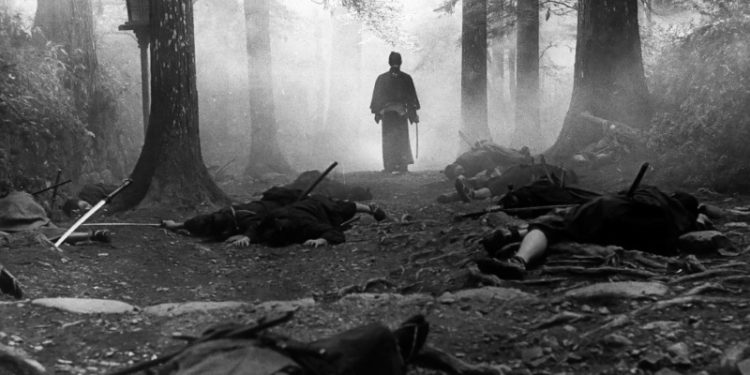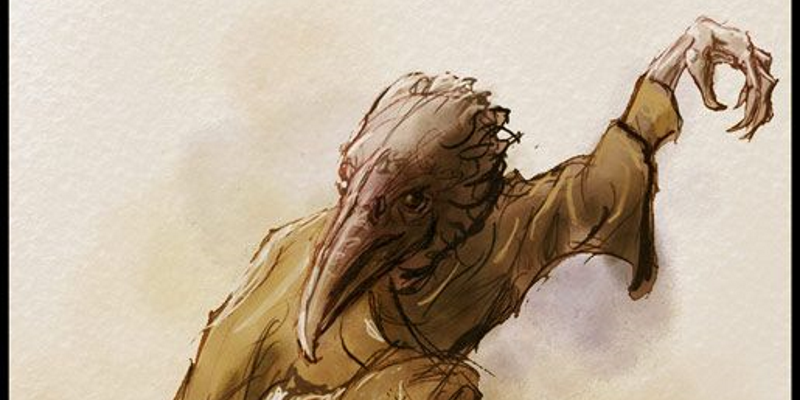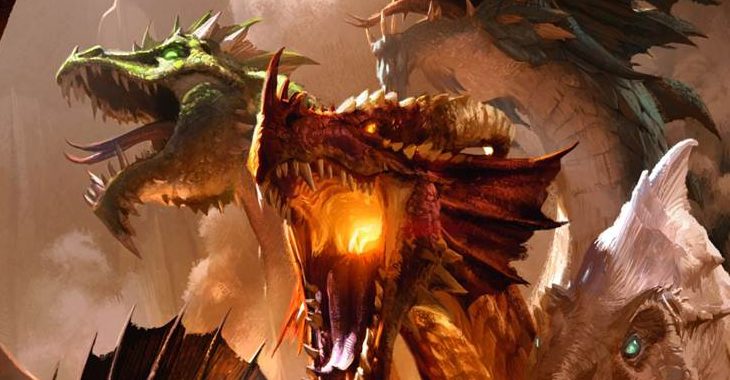The Fighter Class, Part Three

By reader request, I’m returning to AD&D 1e to cover the three fighter-like classes in Oriental Adventures. The bushi, kensai, and samurai are similar enough that 5e would probably present the bushi and samurai as the same subclass with two different backgrounds, while as we know the kensai is now firmly lodged as a subclass of monk. In 1e, which has neither subclasses nor kits, all of these differences go into the same “character class” container. OA does also introduce more ways to talk about personal background and social class, though.
The Bushi
The easiest way to sum up the bushi is “fighter + poverty,” sometimes including people who are thematically if not functionally samurai. Even this results in a class with a lot more going on than the core fighter.
- d10 Hit Dice, fighter attack values, fighter saving throws, fighter weapon and armor proficiency – but using ninja weapons results in a loss of honor. Four weapon proficiency slots; can gain weapon specialization. Bushi gain the normal fighter bonuses for high Strength and Constitution scores. I’m not sure if they can use the same variety of magic items as the fighter; if the text says anything about that, I’m missing it.
- Bushi have to have Dex 8+ and Con 8+. I would feel real bad for the front-liner that didn’t meet those marks anyway. They gain +10% XP for Strength 14+.
- All OA races – humans, korobokuru, hengeyokai, and spirit folk – advance without limit as bushi.
- Since bushi have to maintain their own gear all the time, they gain weaponsmithing, armorsmithing, and bowyer proficiency.
- Bushi gain new proficiency slots every other level.
- Since bushi often have to fight without decent armor (because no one issues armor stamps), bushi get a scaling bonus to AC, -1 per 5 levels.
- Though poor, bushi can always find enough work to stay fed and keep the rain off in any village that doesn’t actively loathe them.
- Bushi are apparently scroungers extraordinaire, and have a percentage chance to find useful common gear in a settlement for anywhere from half price to free. LG bushi must pay or work for it, while CG bushi pay or work for it if they can.
- It’s interesting that the rules call out the behavior of LG and CG bushi, but no other alignments. I wouldn’t like any connection of class mechanics and alignment, but this just looks weird.
- Bushi can pick pockets, with a success chance of 20% + 2% per level. LG bushi do this only against enemies and when they are desperate; CG bushi only target enemies.
- Bushi don’t gain a wide variety of ki abilities, just a 1/day kiai shout that lasts for 10 rounds and increases their functional level by 2. Their additional hit points from those levels are temporary hit points that are lost first. This… is super good. That kind of increased survivability at 1st level is an astonishing game changer, to be honest. It tapers off in relative benefit as you gain levels, but it’s still strong. The text is not totally clear, but it seems to say that you use this feature when you first roll initiative in an encounter – so it doesn’t even take an action.
- At 9th level, bushi can establish themselves as warlords by raising their banner over a captured or cleared estate with clearly-marked boundaries. (I’m not sure why the surveying team is important, but it’s there in the text.) Anyway, 30-60 1st-level bushi (I assume that’s [1d4+2]*10 and not 30d2 or whatever) show up and stick around as long as the pay is good and the cause isn’t utterly doomed. With those conditions, this sounds a lot less like a class feature and a lot more like a transaction that you didn’t really need to be 9th level to handle.
- At 12th level, you add 1d6 1st-level samurai to the ranks of your force, which finally gives you some political legitimacy. This, in turn, grants you the right to establish your family as if they are samurai of the lowest rank.
This is a class with a story, and that story is rising through the ranks from the lowliest foot soldier in the daimyo’s army to enter the ranks of the samurai. It’s perfect for a generational game, if you have the patience to gain 1,000,001 experience points and start over with that character’s heir. I don’t know that the game would be improved if every class had such a strong narrative thread – it strongly discourages other kinds of stories or character arcs – but this is compelling stuff.
Kensai
I’m betting you don’t need me to explain kensai. Just in case, though – they’re sword-saints, with total dedication to mastering a weapon (that doesn’t have to be a sword). Everything is about ki and that one weapon.
- d10 Hit Dice, fighter attack values, fighter saving throws, fighter weapon proficiency – but using ninja weapons results in a loss of honor, unless it’s their most favorite weapon. Functionally two weapon proficiency slots, though this is stated as “proficiency in your chosen weapon or style plus one other proficiency.”
- Kensai cannot gain weapon specialization, which seems like an outright bizarre break with theme. You had a mechanic for this whole class’s concept, and then didn’t use it? Sure. Anyway, kensai gain extra attacks earlier than other non-specialized weapon wielders (4th level) and climb to a greater number of attacks (5/2 at 15th level). So… still kind of lagging behind a character with weapon specialization.
- It’s not clear whether kensai gain fighter-like benefits from high Strength and Constitution.
- Kensai have to have Strength 12+, Dex 14+, and Wisdom 14+. They gain +10% XP for Dex 14+ (um… this is a requirement just to enter, why are they getting paid for it?) and Wis 14+.
- Hengeyokai can advance all the way to 6th as kensai, and spirit folk to 9th.
- Kensai gain new proficiency slots every other level.
- I guess I should point out that early advancement is a kick in the teeth for kensai, as they need 3K XP just to get to 2nd level, while bushi need just 1500. This events back out over the course of 11 levels, though, as they have the same XP values for 12th. I’ve never understood why uneven XP charts seemed like a good idea, and this just persuades me further in that direction.
- Instead of wearing armor or applying their Dexterity bonus to AC, kensai have an AC of 23 – their Dexterity score, which then improves by 1 every three levels.
- Kensai also gain an initiative bonus, scaling from +1 at 1st level to +3 at 9th level, and a +1 bonus to all saving throws.
- Kensai can declare, before their attack roll, that an attack will deal maximum damage if it hits. They can do so once per level per day.
- Kensai gain a +2 bonus on psychic duel rolls against non-kensai. Psychic duels are contested saving throws vs. death that can make a little bit of honor change hands or apply a tiny penalty to the loser if they attack anyway. What I’m saying is, they sound a hell of a lot cooler than their resolution lays out.
- Kensai are immune to fear. I absolutely hate this as a mechanic for portraying one class as more badass than another.
- At 2nd level, kensai gain a scaling damage bonus, starting at +1 and rising to +5 at 12th
- At 3rd level, kensai gain an attack bonus (scaling up to +5 at 12th level) that counts for striking creatures only harmed by magical weapons of that same bonus. This certainly makes up for the class restriction against using magic weapons, but between no magic weapons and no armor of any kind, that’s a whole lot of fighter-like loot that is useless to the character.
- At 4th level, the kensai can meditate, a highly efficient rest state (one hour of meditation counts for two hours of sleep, and you’re fully alert, and you don’t feel hunger, thirst, or cold.
- At 6th level, the kensai reduces the chance that they are surprised to 1/6. The 1e surprise rules and their interactions confuse the hell out of me, so I’m not going to go any deeper on this.
- At 7th level, the kensai can dual-wield without penalty. Presumably this is still restricted based on weapon size, so you can’t dual-wield two-handed swords or halberds, but the text is less than specific.
- Also at 7th level, the kensai gains a line-of-sight fear aura against all creatures of 1 HD or less. Those creatures can save vs. breath weapons, and become immune for the rest of the encounter on a success.
- At 9th level, like you’d expect, the kensai attracts followers: 1d6 1st-level kensai. There are rules to model classic master/apprentice martial arts stories, including the students sometimes leaving and an opportunity to recruit more students when you best other kensai masters in duels. Pretty neat.
- At 11th level, the kensai gains a whirlwind attack, which attacks every creature within 10 feet. Great! On the other hand, you can’t have spent any of your ki yet in the day, and it uses your whole ki pool. Yeah, its cost increases as you gain levels. This was a really cool feature right up to that cost – trading all of your uses of another feature for one moment of cool is pretty disappointing, and unless you can make sure every space within 10 feet of you is filled with enemies, it’s probably a net loss of damage output. It’s burst vs. sustain, of course, but the math gets worse as you advance.
- Kensai cannot use magical versions of their specialty weapon.
- Half XP reward for any fight using a weapon that isn’t their specialty weapon. Sure am glad they bothered giving the kensai more weapon proficiencies!
- Double XP reward for duels against other kensai.
- The kensai has specialized training requirements and a chance to draw a duel. That chance is 10% * your new level, so at 10th level and above you’re dueling for every level advancement, and you don’t advance (losing a whole level of XP, to say nothing of lost honor) if you refuse or lose the duel. Man, would this be miserable at the table. As I often say – if you played a 1e kensai up to 10th level or higher and used this rule as written, please tell me about it.
I’m not sure how much harder Gygax could have worked to paint this as an exotic, more-special-than-everyone-else class. It’s overt fetishizing of Asian martial arts – a major trend line throughout OD&D, 1e, 2e, and 3.x, to be sure, but this is egregious, especially in comparison to the utterly vanilla Player’s Handbook fighter. (In that context, as I’ve suggested, even the bushi is exciting and exotic, for not much reason.)
Samurai
Unsurprisingly, the samurai are also fighters-but-way-better. Honorable warrior, katana and daikyu, right. Actually, the fact that they don’t dual-wield katana and wakizashi is a surprise, because later editions are not going to shy away from that style, which I understand to have been incredibly rare.
- d10 Hit Dice, fighter attack values, fighter saving throws, and fighter armor proficiency. Using ninja weapons results in a loss of honor. Five proficiency slots; can gain weapon specialization in both the katana and daikyu. I’m not sure if samurai gain the normal fighter bonuses for high Strength and Constitution scores (though several features don’t work at all if not!), or if they can use the same variety of magic items as the fighter; if the text says anything about that, I’m missing it. Technically, samurai is a subclass of cavalier.
- Samurai have to have Strength, Wisdom, and Constitution 13+, and Intelligence 14+. They don’t gain a 10% experience point bonus for anything.
- Samurai gain a new proficiency slot every level. Which is good, because they have to spend them in a prescribed way: horsemanship at 2nd level, bow proficiency at 3rd level, calligraphy, painting, and poetry by 6th
- The samurai can focus their ki to increase their Strength to 18/00 for 1 round, with a ki shout, once per level per day.
- The samurai gains a +1 damage bonus (on all damage rolls) at 2nd level, which scales by 1 for every 3 additional levels they gain.
- At 3rd level, the samurai’s chance to be surprised goes down to 1/6.
- At 5th level, the samurai is immune to fear.
- At 6th level, the samurai gains the line-of-sight fear thing that I described for 7th-level kensai.
- At 7th level, the samurai can accept or decline to enter the domain-management game as steward of one of his daimyo’s provinces. This gives him tax revenue (25% of what he collects), 10 bushi, and 1d4 samurai, who do what he says but are ultimately loyal to the daimyo.
- At 8th level, the samurai gets another job offer, which is not mutually exclusive with the 7th-level offer. This grants 10d10 more bushi followers, one of whom might be a ninja. These bushi are loyal as long as loyalty is profitable.
- At 9th level, the samurai gains still more followers: 2d10 samurai, all 1st level, but actually loyal to the character more than to their daimyo. 1d6+1 specialist artisans also show up looking for a job. Oh, and one might a ninja.
- Also at 9th level, the samurai gains a kiai shout that can stun all enemies within 10 feet, and increases the samurai’s strength to 18/00 for 2 rounds. They can use this feature just once per day, and (much like whirlwind attack) it stops them from using other ki abilities. Thumbs way down.
- Code of honor, blah blah blah. If you lose enough honor to become ronin, you require twice as much XP to advance.
So yeah, the samurai are fighters with money just as the bushi are the other kind. They’re objectively better than Player’s Handbook fighters, though they lack the freedom of classic murderhoboes. They don’t have the survivability boost of the bushi, but their damage output can be strong even early on, between weapon specialization and temporary 18/00 Strength. Both the honor rules and the three different features about land and followers connect samurai to society far more than bushi or kensai, just as you’d expect.
A fair number of these features do map forward in one way or another – not so much with the bushi, but the kensai and samurai are starting points for later versions. None of this enters into the fighter’s class DNA in any significant way – oh, sure, there exists a whirlwind attack in plenty of later editions, but it doesn’t look like it’s a lift from this, so much as an independent invention. I like that OA doesn’t embrace the Everyman fighter, but splits it into three distinct classes that each have their own look and approach. I mean, the rest of D&D gets hyper-specific on spellcasters, but treats “fighter” as a catch-all unless you’re tacking on rage, magic, or unarmed combat. I like seeing breaks from that trend, especially when they don’t pigeonhole characters into a single narrative arc.



